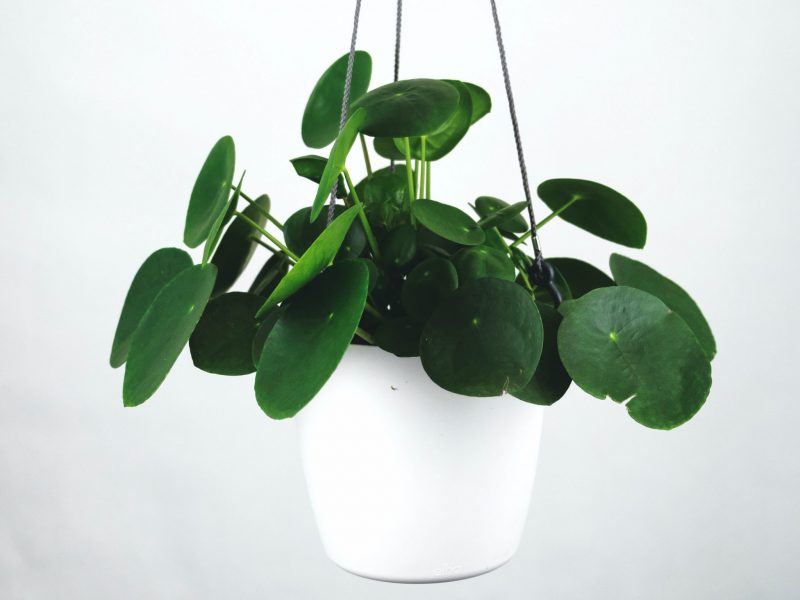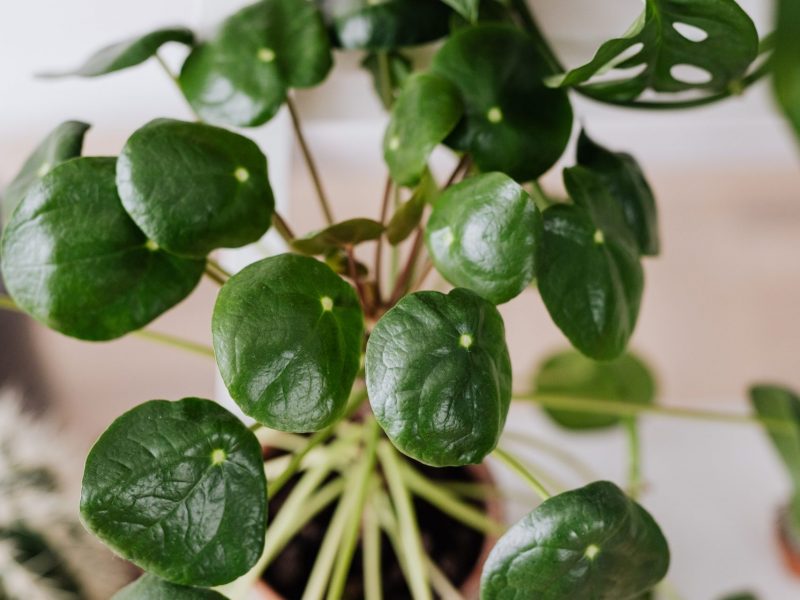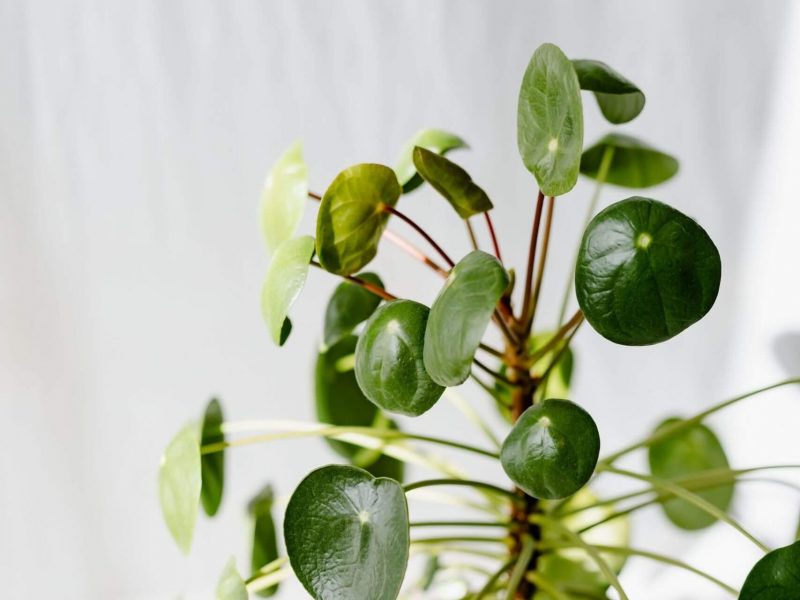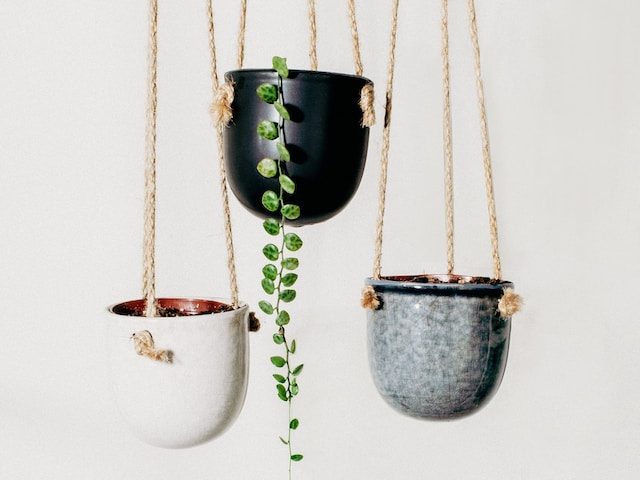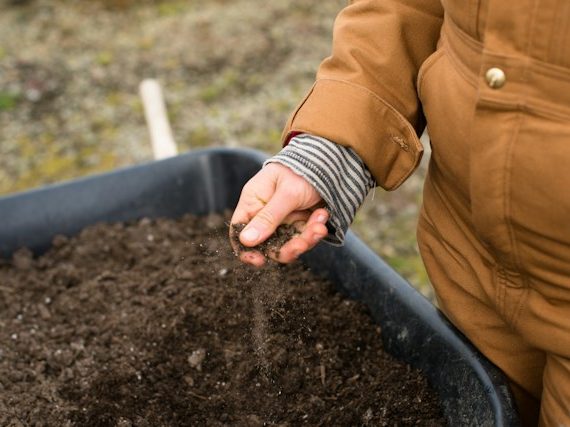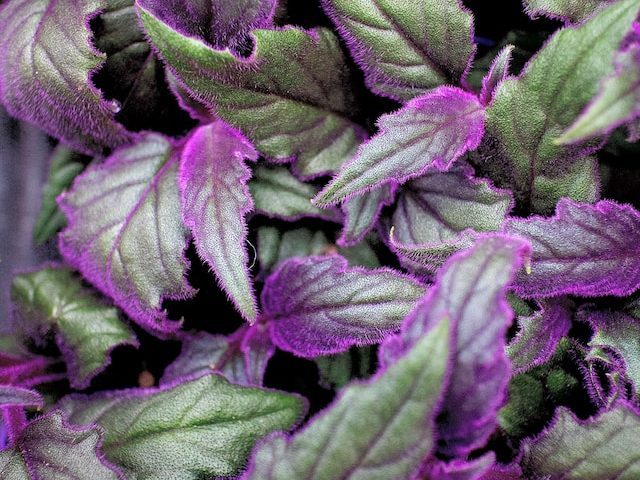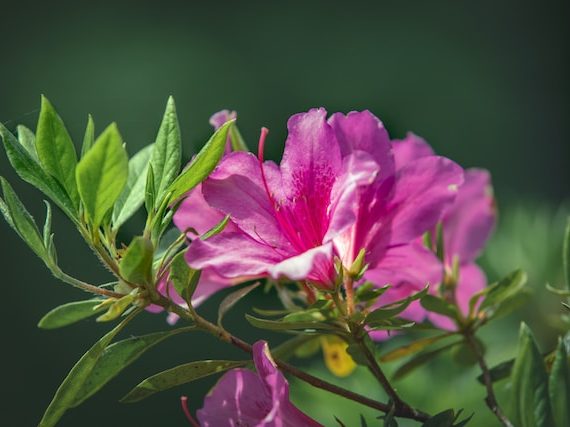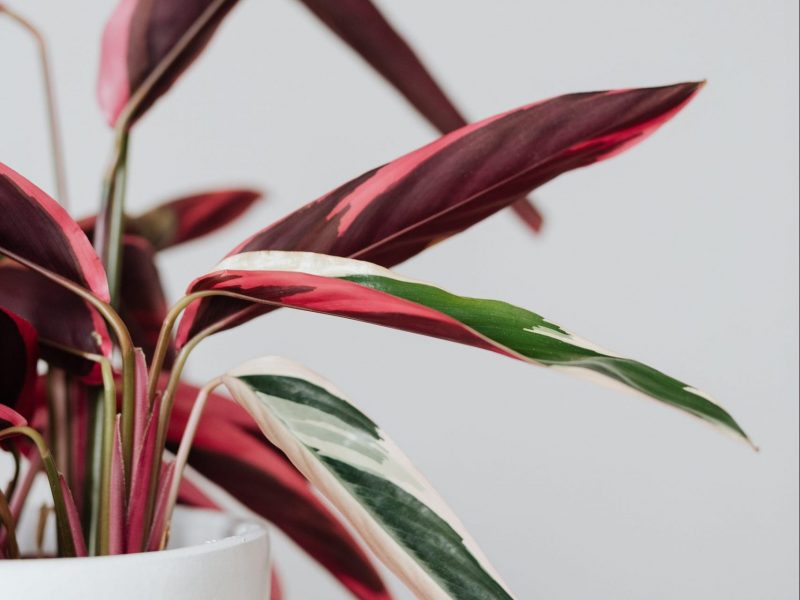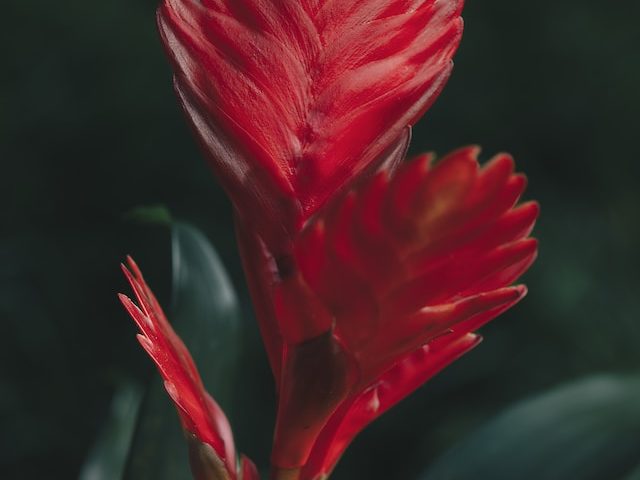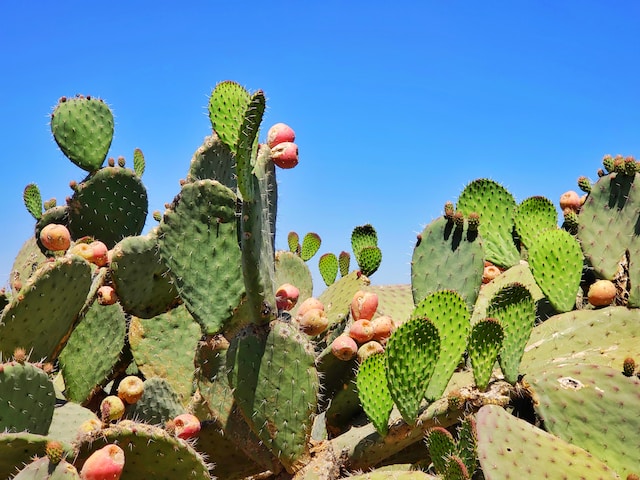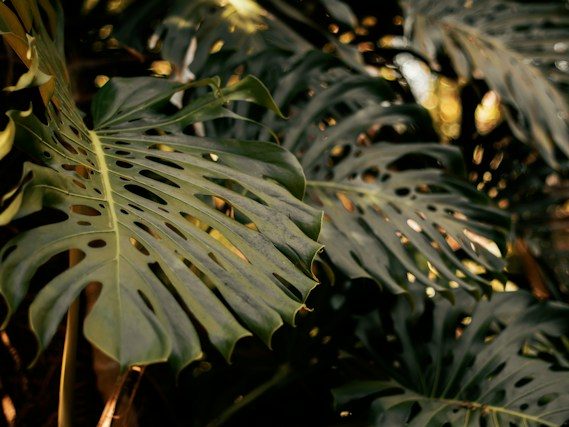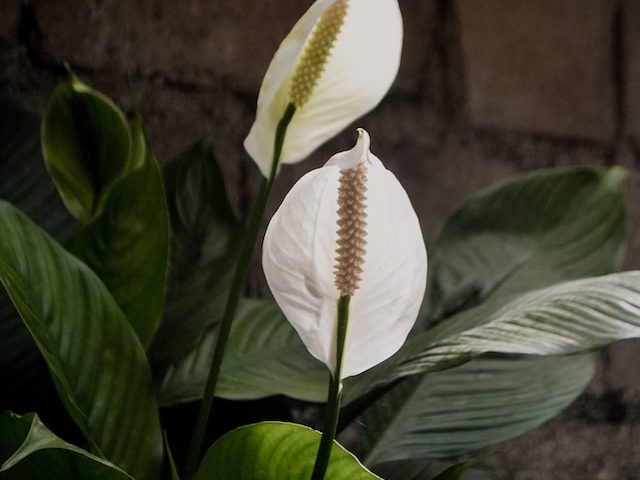Healthy Pilea Plants
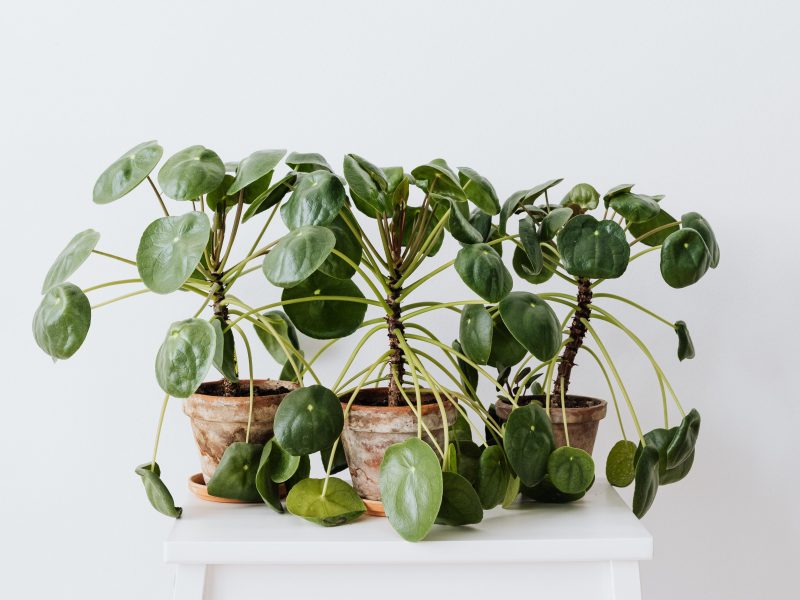
Introduction to the Pilea Plant
Known fondly as the Chinese Money Plant, but scientifically as Pilea peperomioides, this plant is loved for its round, coin-like leaves. It’s also a very adaptable houseplant that thrives in a range of environments which makes it a great recommendation for all plant parents.
A Brief History of the Chinese Money Plant
The Pilea Peperomioides has an intriguing lineage that is steeped in mystery. Its journey across the world is a tale as captivating as the plant itself. This unique herbaceous perennial is believed to have originated in the Yunnan province of Southern China.
Here, it was discovered by George Forrest, a Scottish botanist renowned for his plant exploration. However, the Pilea didn’t become popular until it was brought to Europe by Norwegian missionary Agnar Espergren in the mid-1940s. He shared small cuttings with friends, who further spread the plant throughout Scandinavia.
Why Choose a Chinese Money Plant?
Other than its quirky coin-shaped leaves, which have earned it names like Pancake Plant and UFO Plant, the Chinese Money Plant is renowned for its ease of growth, even for beginners. Our other favourite thing about the Pilea plant is that it is so easy to propagate. Pups shoot out quicker than you can count them and root really quickly when removed from the mother plant.
Identifying the Chinese Money Plant
Being able to identify this plant correctly is crucial for providing it with the best care as there are other similar-looking houseplants around. Let’s delve into the key features that make it stand out.
Leaf Shape and Colour
The most distinctive feature of the Chinese Money Plant is its circular, pancake-like leaves. These flat, shiny leaves are a bright, rich solid green that can add a splash of colour to any indoor setting.
Stem Structure
The Pilea peperomioides has a distinctive stem structure. The sturdy, thick stems stand erect and usually bear a single leaf at their tip. This gives the plant an appealing, minimalist appearance.
Size and Growth Pattern
Typically, a well-cared-for Chinese Money Plant can reach approximately 30-50cm. It exhibits an interesting growth pattern, where new leaves sprout from the base, gradually unfolding into their distinct, disc-like form.
Plantlets
A charming characteristic of the Chinese Money Plant is its production of plantlets. These miniature versions of the mature plant sprout from the root system and can be propagated to produce new plants.
Chinese Money Plant
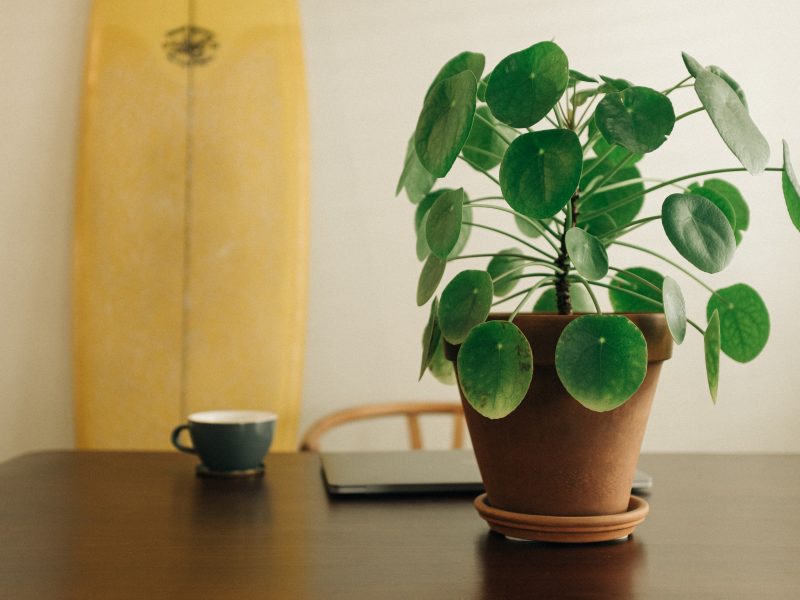
Light Requirements for Your Pilea
A Pilea thrives best under bright, indirect sunlight. However, it is forgiving and can sustain in moderate light conditions too.
It’s important to know that direct sunlight is a no-no for your Pilea. This is because intense sunlight can scorch its delicate leaves, leaving discoloured patches.
But it’s not just direct sunlight that can be damaging to your plant. If your Pilea is not getting enough light, it may show signs of stretching, called etiolation. This is when the plant grows long and spindly as it reaches for more light. In more severe cases, low light can cause brown leaves, leaf drop and plant death.
Top tip: Rotate your Pilea regularly to ensure even growth. This is due to the plant’s tendency to lean and grow towards the light source.
Indoor Lighting for Chinese Money Plant
If your home lacks sufficient natural light, artificial light is a viable option for your Pilea. Fluorescent lights, including compact fluorescent bulbs or full-spectrum fluorescent tubes, serve as an excellent source of artificial light.
- Position the plant 6-12 inches away from the light source.
- Ensure the light source is on for 12-16 hours a day to mimic natural conditions.
- Turn off the light source at night to give your plant some rest.
Watering Your Pilea Correctly
Watering your Pilea is requires a delicate balance between hydrating sufficiently and avoiding overwatering. Below are our top tips to help you water your Pilea properly and avoid watering-related issues such as brown or yellow leaves, leaf drop, root rot and plant death.
How Much Water Does Your Pilea Need?
Like most houseplants, Pilea plants don’t enjoy sitting in really moist soggy soil. The roots are prone to rot if the plant is watered excessively and the impact can be quick and extremely damaging. A good rule of thumb is to water it once the top 1-2 inches of soil has dried out (if you are top down watering). If you are watering from the bottom, the lifting method will help you establish when your Pilea needs more water.
Checking the Soil
One of the most reliable ways to ascertain if your plant needs watering is simply by checking the soil. Plunge your finger into the soil up to your first knuckle. If it feels dry, it’s time to quench your plant’s thirst.
Remember, your Pilea’s water needs may fluctuate with seasonal changes. During the warm summer months, your plant might require a bit more water, while in the cooler winter months, less so.
What water should you use?
When it comes to the type of water, your Pilea isn’t particularly fussy. However, it does prefer water that is free from harsh chemicals like chlorine so if you live in a hard water area, it may be best to use filtered, distilled, or rainwater if available.
Watering Technique
When watering your Pilea, aim for the base of the plant, and ensure water doesn’t sit on the leaves to avoid leaf rot. A watering can with a long narrow spout will help you get this precision and keep the water away from the leaves. A slow, steady watering technique ensures that the water is adequately absorbed by the soil and reaches the roots.
Fertilizing Your Pilea to Promote Growth
The Right Type of Fertiliser
Choosing the right fertiliser for your Pilea is crucial. They prefer a balanced houseplant fertiliser with a 10-10-10 NPK ratio. Avoid using heavy, organic fertilisers which can overwhelm your plant and cause more issues than anything else.
How Often to Fertilise
Over-fertilising can be as harmful to your Pilea as under-fertilising so it’s best to stay cautious when choosing how often and how much to fertilize. During the growing season (spring and summer), feed your Pilea every 2-4 weeks maximum. In fall and winter, cut back fertilizing completely as it doesn’t need it during the dormant growth phase.
Fertilising Technique
When it’s time to fertilise, do so after watering your Pilea. This helps avoid the fertiliser from burning the plant’s roots. And remember, it’s always better to err on the side of less fertiliser than more.
Signs your Pilea needs Fertiliser
Yellowing leaves can indicate your Pilea may need a feed. However, take care as yellow leaves can also signify over-watering and other issues (one of them also being over-fertilization). Make sure you check over the soil and environment to ensure you are making the right diagnosis.
Temperature Requirements
The Chinese Money Plant thrives in a steady indoor climate, typical of most households. Pilea prefers temperatures between 64-75°F (18°C to 24°C).
Extreme Temperatures:
- As a tropical plant, Pilea can’t withstand cold temperatures for long periods of time. Exposure to temperatures below 55°F (13°C) can lead to wilting or even death of the plant over time.
- On the other hand, placing your Pilea in an area with temperatures exceeding 84°F (29°C) can lead to scorching, dehydrated leaves so avoid placing your Pilea too close to cookers, radiators and heating vents.
Temperature Fluctuations:
Minor fluctuations in temperature are generally tolerable, but sudden, drastic changes may cause harm. The plant’s leaves might turn yellow or brown and you may see your Pilea lose leaves as a result of temperature stress.
Humidity Requirements for your Pilea
It’s essential to create an environment that mimics its natural habitat to the best of your ability and humidity is a part of that. However, you’ll be pleased to know that Pilea plants don’t require excessively high humidity levels and will be happy with the average humidity of many homes.
Typically, a humidity level between 40% to 50% is satisfactory for your Pilea. Nonetheless, during the dry winter months, it may require a slight boost as air can dry out a lot faster with the heating on. Here are a few great ways to boost the humidity for your Pilea:
- Humidifier: If you have many indoor plants, investing in a humidifier could be a viable option. Not only will it cater to your Pilea’s humidity needs, but it can also benefit other humidity-loving plants. A humidifier also takes all of the work away from you and will boost the humidity without you having to lift a finger (other than to plug it in!).
- Pebble Tray: Another affordable method is to place your plant above a tray of pebbles which is half filled with water. As the water evaporates, it’ll increase the humidity around the plant. The reason that you want the water to not reach the top of the pebbles is to ensure that your Pilea’s roots are sitting in a pool of water.
- Misting: Regularly misting your Pilea can also aid in maintaining appropriate moisture levels. However, it’s vital to avoid soaking the leaves, as this could lead to fungal issues, especially in cold temperatures to be careful not to mist too late in the day in winter.
Pilea
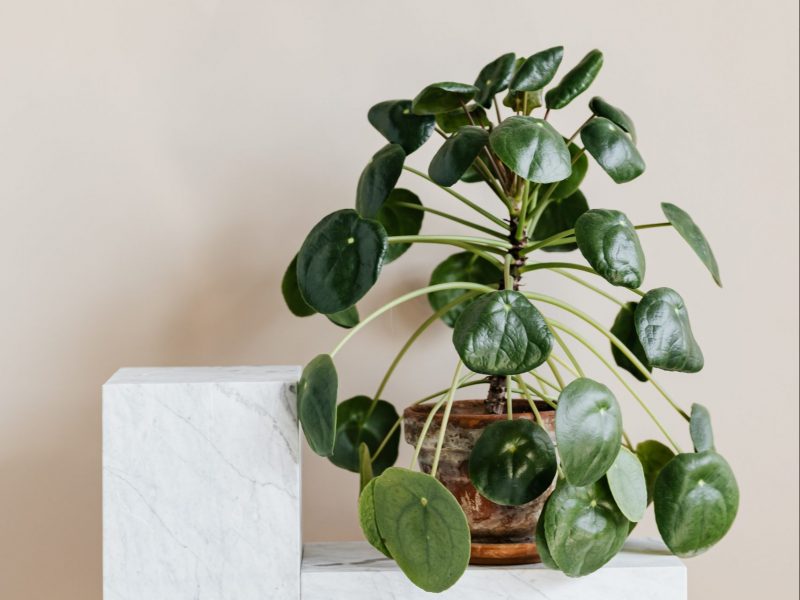
Pruning Your Pilea for Optimal Health
Pruning your Pilea is integral to its overall wellbeing and aesthetic appeal. It not only promotes healthy growth but also shapes your Chinese Money Plant into an appealing structure, shape and size. Not to mention, it’s a preventative measure against diseases as well!
When should you prune your Pilea?
Typically, pruning is best around spring or early summer, when your plant is in its active growth phase. However, you may need to undertake some minor pruning throughout the year if you notice leaves dying or showing signs of disease.
Steps to Prune Your Pilea
- Ensure your pruning shears or scissors are clean and sharp to prevent infection and avoid damaging your plant when making the cut.
- Inspect your Pilea thoroughly to identify any yellow or brown leaves, these are signs of damage or disease.
- Carefully trim off the unhealthy leaves at their base, ensuring not to harm the main stem.
- For aesthetic balance, eliminate any protruding stems that disrupt your plant’s overall symmetry.
- Finally, get rid of any small sprouts emerging from the soil that may steal nutrients from the main plant.
Aftercare
After pruning, take proper care to ensure your Pilea recovers swiftly. Keep an eye out for any signs of stress or disease, and provide it with plenty of indirect light and humidity to ensure it can recover nicely from the initial shock of pruning.
Choosing the Right Soil for Your Pilea
What soil is best for a Pilea?
Pilea plants are content with a well-draining, peat-moss based potting mix. One thing that can’t be stressed enough is the importance of good drainage. Pilea plants are highly susceptible to root rot and overwatering, so a potting mix that drains well can be a real game-changer.
Creating the Perfect Pilea Potting Mix
You can buy a commercial potting mix that will work fine, but many Pilea parents prefer to make their own. Here’s a simple recipe:
- 50% peat moss or coco coir
- 30% perlite for drainage
- 20% organic compost or worm castings for nutrients
Simply mix these together well, and voila! Your Pilea potting mix is ready.
Refreshing the Soil
Every year or two, it’s a good idea to refresh the soil in your Pilea’s pot. This replensihes the nutrients that your plant needs to keep growing strong and healthy. It also gives you a good opportunity to inspect the roots closely to see if you can spot any issues before they’ve progressed enough to start showing up on the leaves.
Repotting your Pilea: Why, When and How
Why Repot your Pilea?
The main reason for repotting a Pilea plant is to give it more room to grow. These plants expand quickly and can become root-bound if they’re kept in small pots for too long. Once your plant is rootbound, you will notice that the rate of new growth declines. So if your Pilea isn’t growing any new leaves in summer we would recommend taking a lot at the root system and seeing if it needs a bigger pot.
In addition, fresh compost in a new pot can provide essential nutrients that your plant needs to thrive.
When to Repot your Pilea?
The best time to repot your Pilea is typically in the spring. This is when the plant is coming out of its winter dormancy and is ready to start growing rapidly. This extra space will give your Pilea room to grow and expand during the upcoming growth period.
However, if you see signs of your plant becoming root-bound, such as yellowing leaves or slower growth, it may be a good idea to repot regardless of the season.
How to Repot your Pilea?
- Prepare a larger pot with fresh, well-draining soil.
- Carefully remove your Pilea from its current pot, trying to keep the root ball intact.
- Place the plant in the new pot, ensuring it’s at the same depth as it was in the old pot.
- Fill in around the plant with additional soil, gently pressing it down but not fully compacting it.
- Water thoroughly, but avoid overwatering as this can lead to root rot.
Remember to take care when handling your Pilea during the repotting process. Its thin stems and delicate leaves can be easily damaged.
Flowers on a Pilea Plant
While typically renowned for its appealing coin-shaped leaves, these houseplants can, on occasion, produce tiny flowers. A Pilea will bloom very unpredictable and sometimes not at all so don’t get your hopes up.
Appearance of Flowers
The flowers on a Pilea plant are small and delicate, popping up from the plant’s stalk. They usually exhibit a soft white or pale pink hue, adding a subtle charm to the overall aesthetic of the plant.
Frequency of Flowering
Flowering is not a regular occurrence in Pilea plants. It is a rare and special event that can happen on both plants with great care and plants that are struggling. Sometimes plants will bloom when they are dying as a last resort to reproduce.
The Role of Proper Care
Ensuring the optimum health and vitality of your Pilea plant is key to encouraging healthy flower growth. Factors such as sufficient bright, indirect light, consistent watering, and a warm environment are crucial to achieving any flowers.
Cleaning your Pilea’s leaves
For a vibrant, healthy Pilea, regular leaf cleaning is essential. This not only maintains its aesthetic appeal but also promotes photosynthesis and wards off pests.
Cleaning essentials
- A soft, damp cloth
- Warm water
- Mild soap (optional)
Step-by-step cleaning procedure:
- Gently wipe each leaf with a soft cloth dampened with warm water. Start from the base of the leaf and move outwards, following the leaf’s natural growth direction.
- If your plant has been battling pests or if the leaves are especially dirty, add a dash of mild soap to your water. Thoroughly rinse the soap off to avoid residue build-up. Don’t forget to clean the underside of the leaves where pests like to hide.
- After cleaning, let your Pilea air dry in a space with indirect light. Avoid direct sunlight to prevent leaf scorch.
Pilea Leaves
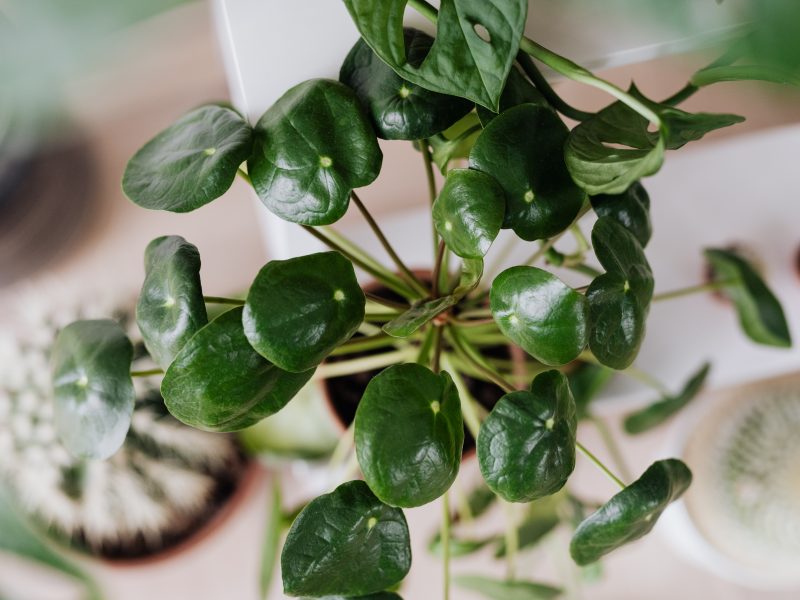
Chinese Money Plant Toxicity
Pilea peperomioides, commonly known as the Chinese Money Plant, is non-toxic. This means it doesn’t pose a threat to humans, cats, dogs, or other pets if ingested. However, as with all plants, it’s advisable not to consume them unless specifically labelled as edible.
Despite its non-toxicity, it’s always better to keep the plant out of reach of pets and children. Some animals might have a mild reaction to the plant, such as nausea or vomiting if they eat it.
If you suspect your pet has ingested a significant amount of any plant and is showing signs of illness, please contact a veterinarian immediately. The same goes for children; if ingested, contact a healthcare professional right away.
Chinese Money Plant FAQs
How much sunlight does a Pilea need?
Pilea plants are definitely light lovers and will struggle in low-light environments. But it is also important that you do not place your Pilea in direct sun as this will burn the leaves and can cause your plant to turn red and then brown.
You may begin to notice that your Pilea is reaching for the light and is growing lopsided. If this is the case, make sure to rotate your Pilea plant every few days to make sure it grows straight.
How often should I water my Pilea?
Pilea plants hate sitting in waterlogged soil so it’s important the soil has enough time to dry out. Whilst a specific schedule will vary across each individual plant, on average you should look to water once a week during summer and fortnightly during winter.
Is the Pilea toxic?
Pilea plants are non-toxic for pets and humans. However, it can cause some mild irritation and stomach pain if ingested in large quantities.
How do I encourage pups to grow on my Pilea?
As your Pilea ages and matures, it will grow pups off the main stalk if the care and environment are right. If your Pilea isn’t growing pups it might still be too young, rootbound or an environmental factor isn’t quite right.
Are Pilea plants easy to care for?
Pilea pants can be a little fussy sometimes so we wouldn’t always class them as total beginner houseplants but you definitely don’t need to be a plant expert to keep them thriving.
Should I remove the Pilea babies?
It’s totally up to you if you choose to propagate the pups on your Pilea. They can make great gifts or help to expand your urban jungle, but can also look great still with the parent plant. It’s completely your choice.
Do Pilea plants produce flowers?
Pilea plants do rarely produce small flowers. You can either remove the flowers or wait for them to wilt on their own.
Common Problems with your Chinese Money Plant
Here are some common issues that you might run into. It’s important to diagnose any issues early to give your plant the best chance of bouncing back.
Why are my Pilea's leaves curved?
Curved and cupping leaves on a Pilea are often a sign of insufficient light as the leaves are trying to maximise the surface area that is exposed to the light. Using a light meter can help you figure out the best spot to move your Pilea to, as going the other way and giving your Pilea too much light can also cause a new range of issues.
Why are my Pilea's bottom leaves turning yellow?
Yellowing of the bottom leaves of your Pilea is often simply due to natural shedding. However, if you notice your Pilea is developing lots of yellow leaves at the bottom of plant you may want to fertilise it and move it to a sunnier spot. Our Pilea plants really love this liquid fertiliser which is available on Amazon.
Why has my Pilea got yellow leaves?
Yellow leaves on your Pilea plant could be due to either too much light or overwatering. Make sure that you allow your Pilea to dry out between waterings as root rot may also be causing yellow leaves on your Pilea. Read more in our guide to yellowing leaves.
Why are my Pilea leaves staying very small?
If the new growth on your Pilea is staying very small, this could be down too over-fertilisation which is encouraging too much new growth all at once.
Why are white spots forming on my Pilea's leaves?
It is quite common to notice white spots on your Pilea’s leaves. This happens a lot when you are watering with tap water in a hard-water area. A few white spots on the underside of your Chinese Money Plant’s leaves are nothing to worry about.
Why are my Pilea's leaves curling inwards?
Curling leaves on your Pilea could be due to your plant being overwatered or suffering from heat or light stress. Curling Pilea leaves can be quite a complex one to diagnose so we have a whole guide on how to fix your Pilea’s leaves from curling inwards.
Why is my Pilea dropping leaves?
If you find that your Chinese Money Plant is losing leaves, it may be due to overwatering or heat/light stress. We have written a whole guide on this to help you understand why your Pilea is losing leaves.
Why are my Pilea's leaves drooping?
If you find that your Pilea’s leaves are looking quite sad and drooping down, it may be due to issues with watering. Alternatively, a lack of sunlight or other stressful indicators such as repotting may have caused your Pilea’s leaves to droop.



